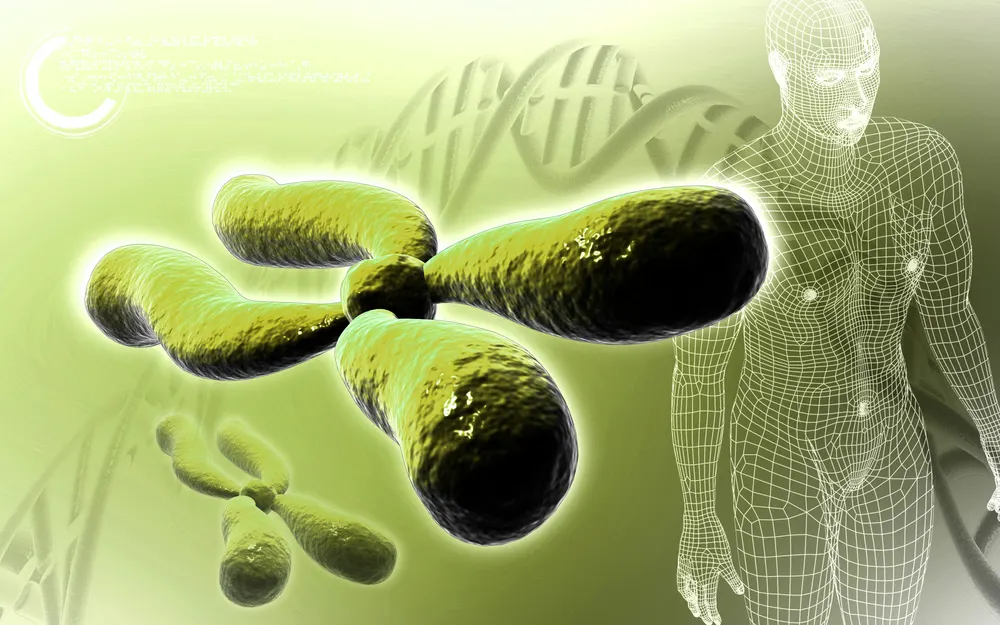The future of human evolution holds many mysteries, one of which is the fate of the Y chromosome. This tiny, yet crucial, piece of our genetic code is slowly vanishing, raising profound questions about what this means for humanity. Imagine a world where the very determinants of sex are redefined, driven by nature’s relentless march of adaptation.
Recent discoveries in the genetics of certain rodent species have shed light on potential pathways that life might take in the face of such dramatic changes. These findings not only challenge our understanding of genetics but also offer a glimpse into the remarkable resilience and adaptability of life. Could humans, too, find a way to thrive without the Y chromosome? The answers lie within the depths of genetic research, revealing a story that is as intriguing as it is essential for our future.
How Sex Chromosomes Shape Our Understanding of Gender

Sex chromosomes play a pivotal role in determining the sex of an organism, a discovery rooted in over a century of scientific exploration. These specialized chromosomes, different from the autosomal chromosomes that make up the bulk of an organism’s genetic material, have fascinated researchers since the late 19th century.
The journey began in 1891 with German biologist Hermann Henking, who first observed an unusual chromosome during his studies on wasp sperm cells. Henking noticed that some sperm cells contained an extra chromosome, which he labeled the “X element” due to its mysterious nature. This element was later found to be absent in female cells, leading Henking to hypothesize its role in sex determination, although he couldn’t prove it at the time.
A decade later, American zoologist C. E. McClung expanded on Henking’s work by studying spermatogenesis in various species, including insects, spiders, and mice. McClung introduced the term “accessory chromosome” and proposed that this chromosome was crucial for sex determination. His observations showed that this accessory chromosome behaved differently during cell division, suggesting it played a key role in creating the two types of sperm cells required for sexual reproduction.
The Impact of Walter Sutton and Later Discoveries
Further evidence came from McClung’s student, Walter Sutton, who meticulously traced the behavior of chromosomes during meiosis in grasshoppers. Sutton’s work provided strong support for the idea that these chromosomes were essential for inheritance and sex determination. He observed that gametes contained half the number of chromosomes found in somatic cells, reinforcing the concept that the pairing and separation of chromosomes during reproduction were vital for maintaining genetic balance.
In the early 20th century, the discoveries of researchers like Nettie Stevens and E. B. Wilson solidified the role of sex chromosomes. Stevens identified distinct chromosomal patterns in beetles that differed between males and females, coining the term “heterochromosomes.” Wilson’s extensive studies in insects led him to describe two systems of sex chromosome pairing: Type A (XX/XO) and Type B (XX/XY), which later became known as the fundamental mechanisms by which sex is determined in many species.
Wilson’s classifications showed that in Type A systems, males have one fewer chromosome (XO), while in Type B systems, males possess a distinct, often smaller chromosome (Y) alongside the X chromosome. These findings established the foundation for understanding how chromosomes dictate sexual characteristics.
How Different Creatures Determine Their Sex
Modern research has expanded these early discoveries, revealing that sex determination mechanisms can vary widely among different organisms. For instance, in birds and some reptiles, a ZW system is used, where females have the mismatched chromosome pair (ZW) and males have identical pairs (ZZ).
These historical breakthroughs not only demystified the process of sex determination but also paved the way for broader genetic research. By connecting specific chromosomes to inherited traits, scientists began to unravel the complexities of genetic inheritance, leading to the advanced understanding we have today. The study of sex chromosomes continues to be a dynamic field, offering insights into the intricate dance of genetics that defines every living organism.
Rodents with Disappearing Y Chromosome

Over time, the Y chromosome has been shrinking, losing genes at a notable rate. Research suggests that the Y chromosome has lost approximately 900 genes over 166 million years, a rate of about five genes per million years. If this trend continues, the remaining genes on the Y chromosome could vanish in about 11 million years, raising concerns about the future of male sex determination in humans.
Two rodent species, mole voles and spiny rats, have already lost their Y chromosomes but continue to thrive. This phenomenon offers valuable insights into potential human genetic adaptations. The mole voles’ method of sex determination without the Y chromosome remains unclear, but significant progress has been made with the spiny rats.
Discoveries in Spiny Rats
A team led by Asato Kuroiwa at Hokkaido University discovered that in spiny rats, most Y chromosome genes had relocated to other chromosomes, but they found no trace of the SRY gene, which typically initiates male development. Instead, they identified a small duplication near the SOX9 gene on chromosome 3, present in all male spiny rats but absent in females.
This duplicated DNA acts as a switch to boost SOX9 activity, effectively replacing the function of the SRY gene. When this duplication was introduced into mice, it enhanced SOX9 activity, enabling male development without the SRY gene. This discovery suggests that similar genetic adaptations could potentially occur in humans, offering hope for the future even if the Y chromosome disappears.
Potential Human Evolution and Its Risks
The imminent disappearance of the Y chromosome in humans has led to considerable speculation about the future of human reproduction. Some experts believe that, like the spiny rats, humans could evolve new genetic mechanisms to determine sex. However, this evolutionary process is not without risks. One significant concern is that multiple new sex-determining systems could evolve in different human populations, potentially leading to the emergence of distinct human species. This phenomenon has already been observed in mole voles and spiny rats, where different populations have developed unique mechanisms for sex determination.
Moreover, the possibility of a “war” of the sex genes, where different sex-determining systems compete, could further complicate human evolution. This scenario could result in reproductive isolation and the eventual formation of new species, as has happened with the rodents.
A Glimpse into Our Genetic Future
The gradual disappearance of the Y chromosome and the remarkable adaptations observed in spiny rats highlight the incredible resilience of life. These genetic changes, while challenging, also open up new possibilities for understanding and potentially guiding human evolution. By studying these adaptations, scientists are uncovering the mechanisms that could one day help humans navigate similar genetic shifts.
As we continue to explore the frontiers of genetics, the story of the Y chromosome serves as a reminder of both the fragility and strength inherent in our biological makeup. The future may hold uncertainties, but the insights gained from current research provide a foundation of hope and curiosity. Embracing these discoveries will be crucial in preparing for the genetic journeys that lie ahead.



